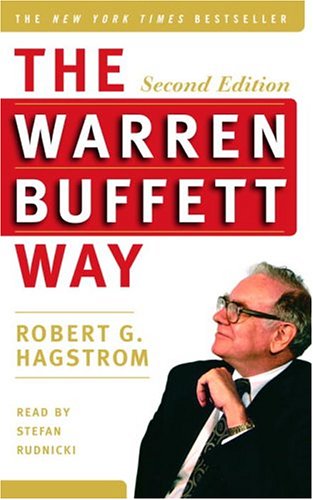 There is nothing in this book that Warren Buffett hasn't already said in his annual letters. Robert Hagstrom revealed his true reason for writing this book when the first paperback edition came out and in it, in fine print, was a notice stating that Hagstrom had started an investment fund designed to invest using Warren Buffett's principles (read: way). That is, he wrote the book so you would learn his name, become confident in his ability to analyze investments like Buffett does, and invest in his fund (which has a hefty expense ratio and has performed quite poorly I understand). So he writes this page book, in which he recommends that if you ever have the chance to read Buffett's annual letters, you should since they "read like a book on his investment philosophy". I took his suggestion, ordered the back annual letters (sold by Berkshire Hathaway for $15) and found they repeated everything in this book - sometimes word for word (now how could Buffett have known what Hagstrom was going to write?). I get the feeling that Hagstrom has never met Buffett and never discussed investing with him (unlike Lowenstein, Lowe, Train, etc.) and his only research for this book was Buffett's annual letters. I learned more about Buffett's style from Roger Lowenstein's biography. Take Robert Hagstrom's advice and purchase the annual letters; they say the same thing - except Buffett's sense of humor is better.
There is nothing in this book that Warren Buffett hasn't already said in his annual letters. Robert Hagstrom revealed his true reason for writing this book when the first paperback edition came out and in it, in fine print, was a notice stating that Hagstrom had started an investment fund designed to invest using Warren Buffett's principles (read: way). That is, he wrote the book so you would learn his name, become confident in his ability to analyze investments like Buffett does, and invest in his fund (which has a hefty expense ratio and has performed quite poorly I understand). So he writes this page book, in which he recommends that if you ever have the chance to read Buffett's annual letters, you should since they "read like a book on his investment philosophy". I took his suggestion, ordered the back annual letters (sold by Berkshire Hathaway for $15) and found they repeated everything in this book - sometimes word for word (now how could Buffett have known what Hagstrom was going to write?). I get the feeling that Hagstrom has never met Buffett and never discussed investing with him (unlike Lowenstein, Lowe, Train, etc.) and his only research for this book was Buffett's annual letters. I learned more about Buffett's style from Roger Lowenstein's biography. Take Robert Hagstrom's advice and purchase the annual letters; they say the same thing - except Buffett's sense of humor is better.DOWNLOAD THIS BOOK HERETags: warren buffet, book, books, best seller, NewYork times, Nevada, invest, finance, investing, education, Omaha, Berkshire, billionaire

